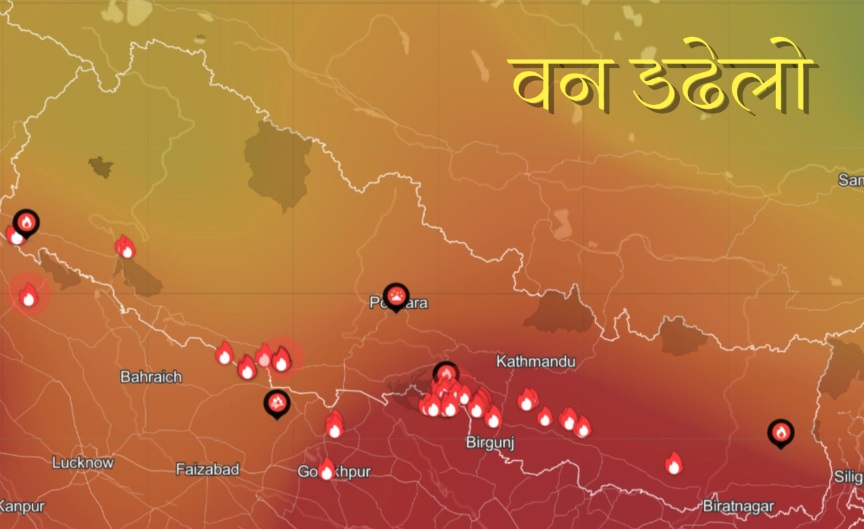Kathmandu. Nepali citizens have been in a double bind for the past few days, with more than 500 active fires burning forests and agricultural land in the southern Terai. Violent protests by royalists in Kathmandu and the use of weapons during the state crackdown have further worsened air pollution.
As the government held a press conference detailing the number of tear gas canisters and gunshots fired at the protests, smog pushed the air quality index (AQI) above 400 (hazardous level) in many areas, raising serious public health concerns.
According to the Ministry of Forests and Environment, more than 520 active fire spots were detected across Nepal last week, with the highest numbers in Bara, Parsa, Chitwan, Dang and Bardiya districts. The sight of dense forest fires burning along highways is heartbreaking for any traveler. Irreparable damage has been caused to wildlife and the environment.
At least 15 people, including firefighters and civilians, have died in fires caused by various causes this summer. Hundreds of civilians have suffered from respiratory diseases due to smoke.
The Nepal Army, Armed Police Force and local volunteers are working to extinguish the fire with helicopter water droplets and from the ground, but strong winds and drought are hampering control efforts. The government is being criticized for not having adequately prepared for forest fire control. The inaction shown by the home administration during the unseasonal rains of last Asoj and the delay in rescue efforts doubled the number of human losses. The home administration is facing criticism for failing to control the demonstration on Chaitra 15 in Tinkune, Kathmandu.
When farmers burn stubble in the fields after bringing in the crops, the heat and smoke from the fire, along with the ash, are contributing to the haze in the sky. Environmentalists have expressed concern that human negligence is the main reason behind the forest fires.
Meanwhile, the violent demonstration in Kathmandu on Chaitra 15 has further worsened the air quality. The AQI of the federal capital Kathmandu briefly reached 450, making it one of the most polluted cities in the world. Hospitals report an increase in patients with asthma, chest pain and burning eyes.
With climate change intensifying droughts, Nepal could face worse wildfires in the future. Experts argue that better forest management, early warning systems and community awareness can reduce the risk of fires. Tougher penalties have also been proposed for burning crops and burning forests in extreme weather.























